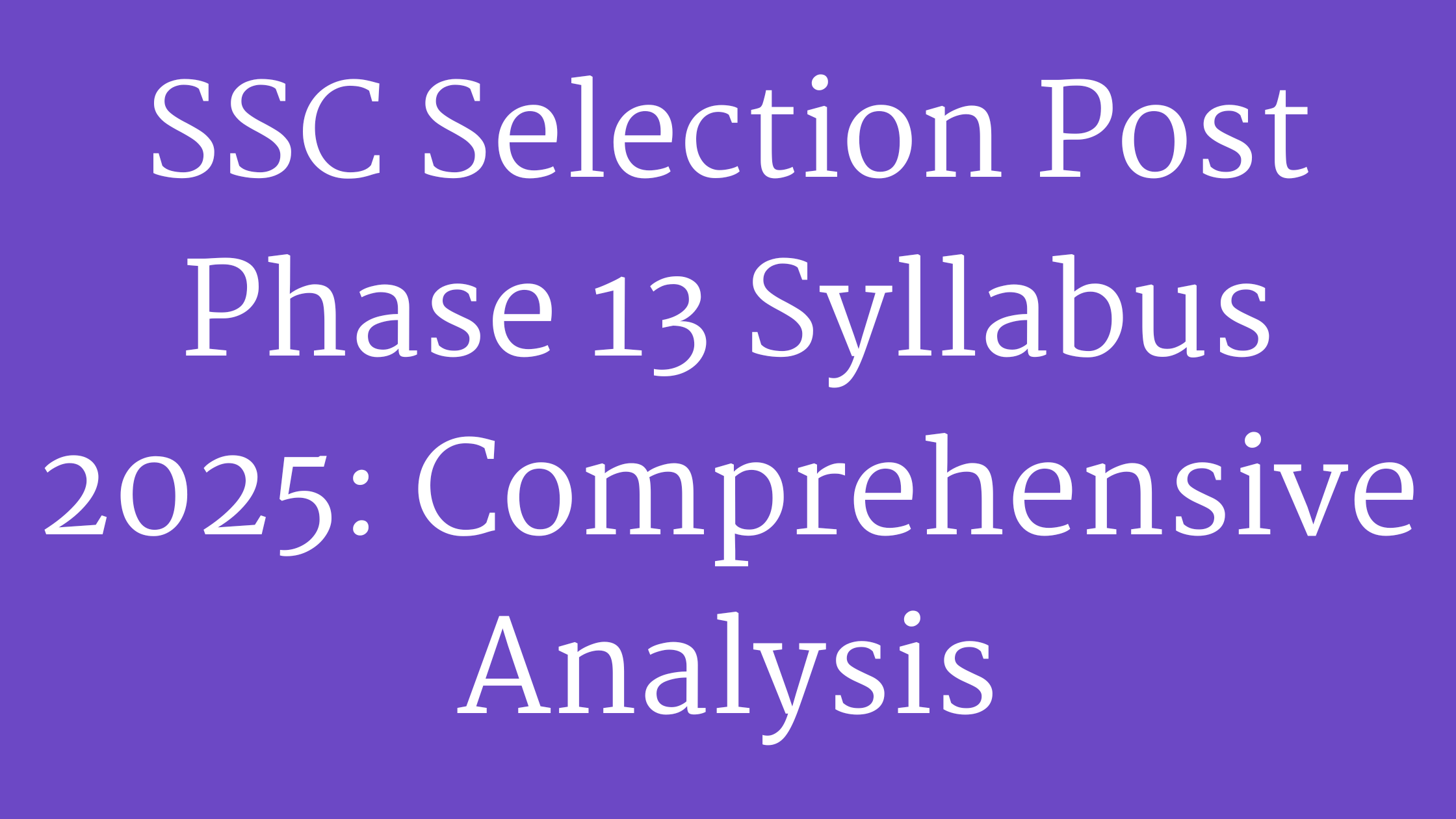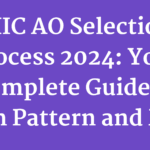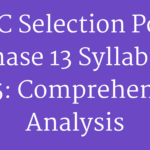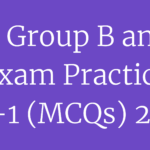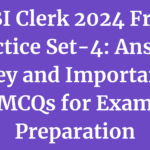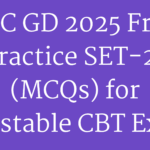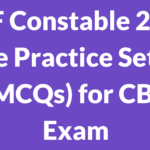The SSC Selection Post Phase 13 Syllabus 2025 serves as a roadmap for aspirants aiming to excel in this competitive examination. It outlines the topics and areas you need to focus on, ensuring efficient preparation. Whether you’re applying for Matriculation, Higher Secondary, or Graduation level posts, understanding the syllabus is the first step toward crafting a robust study plan. Let’s explore the syllabus in detail and examine strategies to maximize your preparation.
Key Sections in SSC Selection Post Phase 13 Syllabus 2025
The syllabus comprises four primary sections:
- General Awareness
- Quantitative Aptitude
- General Reasoning
- English Comprehension
Each section tests distinct skill sets. Depending on the post’s qualification level, the difficulty and focus of these sections may vary. Below, we’ll break down the syllabus for each qualification level: Matriculation, Higher Secondary, and Graduation.
The Matriculation Level syllabus assesses basic concepts and foundational skills. Key subjects include:
General Intelligence
- Non-verbal questions: similarities, differences, space visualization, and judgment skills.
- Topics such as arithmetical reasoning, non-verbal series, and visual memory.
General Awareness
- Current events, sports, history, geography, and scientific research.
Quantitative Aptitude
- Number systems, decimals, fractions, percentages, and averages.
- Arithmetic problems: ratio and proportion, mensuration.
English Language
- Grammar basics, vocabulary, sentence structure, synonyms, and antonyms.
Preparation Tip: Focus on strengthening your fundamental understanding of each subject.
At the Higher Secondary Level, the syllabus includes advanced topics and analytical reasoning. The subjects include:
General Intelligence
- Verbal and non-verbal reasoning: analogies, classifications, and series.
- Problem-solving, coding-decoding, and emotional intelligence.
General Awareness
- Topics like current events, history, geography, the economic scene, and general polity.
Quantitative Aptitude
- Arithmetic, algebra, geometry, and mensuration.
- Time and distance, time and work, and simple and compound interest.
English Language
- Error spotting, sentence improvement, fill-in-the-blanks, and comprehension passages.
Preparation Tip: Practice reasoning and aptitude questions daily to build problem-solving speed.
The Graduation Level syllabus is the most demanding, requiring an in-depth understanding of concepts. Here’s what’s included:
General Intelligence
- Numerical and verbal reasoning, problem-solving, and space orientation.
- Advanced topics like visual memory and similarities/differences.
General Awareness
- Focus on current affairs, history, geography, and the application of environmental concepts in society.
Quantitative Aptitude
- Algebra, geometry, trigonometry, and statistical charts.
- Advanced problem-solving using graphs, angles, and heights.
English Language
- Grammar usage, sentence correction, and comprehension.
- Idioms, phrases, and one-word substitutions.
Preparation Tip: Develop analytical skills and solve previous years’ papers for a better grasp of advanced topics.
Understanding the exam pattern is as crucial as knowing the syllabus. Below is an overview:
| Section | Number of Questions | Marks per Question | Total Marks |
|---|---|---|---|
| General Intelligence | 25 | 2 | 50 |
| General Awareness | 25 | 2 | 50 |
| Quantitative Aptitude | 25 | 2 | 50 |
| English Language | 25 | 2 | 50 |
| Total | 100 | 2 | 200 |
Time Management: Allocate time wisely to ensure you cover all sections within the allotted time.
Preparation Tips for SSC Selection Post Phase 13 Exam
- Understand the Syllabus: Familiarize yourself with every topic in the syllabus.
- Create a Study Plan: Allocate specific time slots for each section based on your strengths and weaknesses.
- Practice Regularly: Solve mock tests and previous years’ question papers.
- Strengthen Basics: Focus on conceptual clarity, especially for reasoning and aptitude sections.
- Stay Updated: Keep track of current affairs and recent developments.
The syllabus acts as a guiding framework, enabling you to prepare systematically. Whether you’re targeting Matriculation, Higher Secondary, or Graduation level posts, a thorough understanding of the syllabus ensures focused preparation and boosts confidence. Regular practice, coupled with a strategic study plan, is key to acing this exam.
Always check the official SSC website for updates on syllabus changes or exam notifications. By staying informed and consistent in your preparation, you can enhance your chances of cracking the SSC Selection Post Phase 13 exam.
For additional guidance, explore our related resources:
- CWC Syllabus 2025: Detailed Exam Pattern for MT and Other Posts
- Assam SLET Syllabus 2025: Subject-Wise PDF Download
- RRB Group D Syllabus 2025: Subject-Wise Topic Analysis
- UPPSC AE Syllabus 2025: Prelims & Mains Syllabus & Exam Pattern
FAQs on SSC Selection Post Phase 13 Syllabus 2025
- What are the major sections covered in the SSC Selection Post Phase 13 Syllabus 2025?
- General Awareness, Quantitative Aptitude, General Reasoning, and English Comprehension.
- Does the syllabus vary based on qualification level?
- Yes, it differs for Matriculation, Higher Secondary, and Graduation levels.
- What is the exam pattern for the SSC Selection Post Phase 13 exam?
- The exam has 100 questions, each carrying 2 marks, with a total of 200 marks.
- How should I start preparing?
- Begin with understanding the syllabus, creating a study plan, and practicing consistently.
- Where can I find updates about the exam?
- Visit the official SSC website for notifications and syllabus changes.
